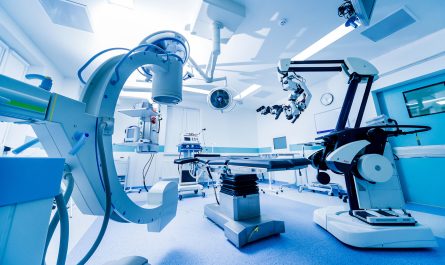The global Raman Spectroscopy Market is widely used for analytical applications in various industries such as pharmaceutical, biotechnology, life sciences, materials science, semiconductor, and others. Raman spectroscopy is commonly used for characterization of chemicals, polymorphism detection, and identification of unknown materials. It provides fingerprint information through vibrational spectroscopy, thus enabling identification of different types of materials based on their molecular structure or chemical composition.
The global Raman Spectroscopy Market is estimated to be valued at US$ 1.36 billion in 2024 and is expected to exhibit a CAGR of 8.0% over the forecast period 2024 to 2031, as highlighted in a new report published by Coherent Market Insights.
Raman spectroscopy has been gaining increasing adoption in various applications in pharmaceutical and biotechnology industry for applications such as identification of polymorphic forms, quantitative and qualitative analysis, and detection of impurities. It enables non-destructive analysis of solid dosage forms such as tablets and powders without any sample preparation. This helps in characterization of pharmaceutical ingredients, excipients, and finished products, and ensures their quality and consistency. Raman spectroscopy also finds increasing usage in analytical characterization of biomolecules such as proteins, nucleic acids, and tissue microbiology. These capabilities are fueling adoption of Raman spectroscopy systems in pharmaceutical and biotechnology companies for drug discovery, development, and manufacturing applications.
Market Dynamics:
One of the major drivers for the global Raman spectroscopy market growth is the increasing adoption of Raman spectroscopy in the pharmaceutical and biotechnology industry. Raman spectroscopy provides fingerprint molecular information for various biomolecules without damaging the sample. This helps pharmaceutical and biotechnology companies in applications such as identification of polymorphic forms of drugs, quantitative and qualitative analysis, and detection of impurities. Raman spectroscopy also enables in-line real time process monitoring and quality control in pharmaceutical manufacturing. Furthermore, increasing R&D investments by biotechnology and pharmaceutical companies for development of new drugs and diagnostics is also fueling the adoption of Raman spectroscopy techniques.
Segment Analysis
The global Raman Spectroscopy market is segmented based on product type, application and end users. Based on product type, the market is segmented into Raman Spectrometer, accessories. Raman spectrometers held the largest market share in 2021 owing to rising applications across various industries. Based on application, the market is segmented into life sciences, material science, semiconductors, security testing etc. Life sciences segment dominates the market owing to rising applications in pharmaceuticals, chemical analysis and biomedical research. The material science segment is expected emerge as the fastest growing segment over the forecast period. Based on end users, the market is segmented into pharmaceuticals and biotechnology companies, academia and research institutes, industrial application etc. Pharmaceutical and biotechnology companies hold the dominating share in the market on account of widespread application of Raman spectroscopy in drug discovery, materials characterization etc.
PEST Analysis
Political: Governments across various countries are introducing supportive regulations to boost life science research. For instance, favorable funding policies for R&D projects involving Raman spectroscopy.
Economic: Rising healthcare spending along with growing pharmaceutical industry globally is fueling the demand for advanced material characterization techniques like Raman spectroscopy. In addition, growing research funding is supporting market growth.
Social: Increasing incidences of chronic diseases are raising awareness about healthcare and diagnosis. This is creating opportunistic environment for advanced technologies like Raman spectroscopy for disease diagnosis and drug discovery.
Technological: Continuous technological advancements are making Raman spectroscopy systems more compact, portable and affordable. Integration of artificial intelligence and robotics in Raman spectroscopes is also enhancing their capabilities.
Key Takeaways
The Global Raman Spectroscopy Market Size is expected to witness high growth over the forecast period owing to expanding application areas in pharmaceutical industry, biomedical research and semiconductor sector. The global Raman Spectroscopy Market is estimated to be valued at US$ 1.36 billion in 2024 and is expected to exhibit a CAGR of 8.0% over the forecast period 2024 to 2031.
Regional analysis:
North America particularly the US commands the largest share of the global Raman Spectroscopy market due to strong biopharma industry presence and extensive use in academia and research. The market in Asia Pacific region is estimated to grow at the fastest pace during the forecast period primarily led by China and India. Governments in the Asian countries are introducing policies to boost domestic research and development activities involving Raman spectroscopy to explore its potential particularly in the areas of drug discovery, material analysis and semiconductor inspection.
Key players:
Key players operating in the Raman Spectroscopy market are Quintiles IMS Holdings, Inc. (now IQVIA Holdings Inc.), PAREXEL International Corporation, ICON plc. These leaders are focused on developing portable and cost-effective Raman spectroscopy systems and expanding commercialization opportunities through collaborations with universities and research labs.
*Note:
1. Source: Coherent Market Insights, Public sources, Desk research
2. We have leveraged AI tools to mine information and compile it




